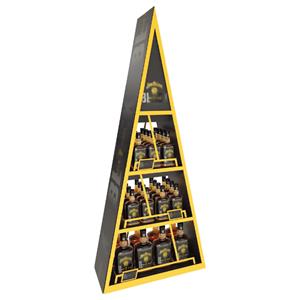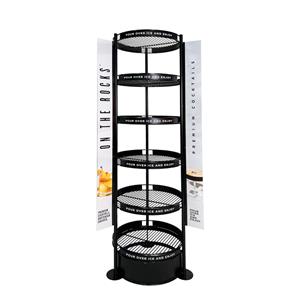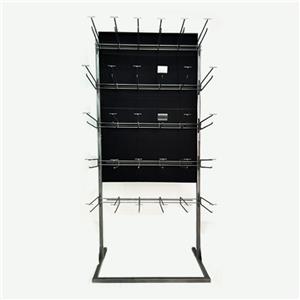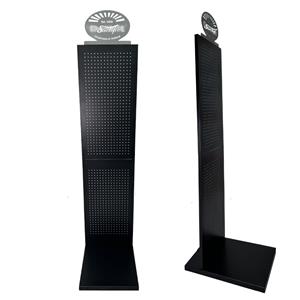How to Run a Jewelry Store?
How Custom Display Stands Revolutionize Retail: From Lipstick to Seed Racks
Table of contents
1)Introduction
2)Display Mistakes That Drive Customers Away
3)Picking Displays That Actually Work
4)Store Layout Tricks That Keep Customers Browsing
5)Keeping Your Displays Looking Sharp
6)Sales Tricks That Really Work
7)Questions I Get All the Time
8)Sintop Value
Let me tell you the case that Sarah's jewelry store disaster. She spent thousands on beautiful pieces, then displayed them on those cheap plastic stands you see at flea markets. Her gorgeous $2,000 necklaces looked like costume jewelry! That's when I sat her down and explained why proper displays matter. A good necklace display bust and acrylic jewelry display case can make or break your store - I've seen it happen too many times.
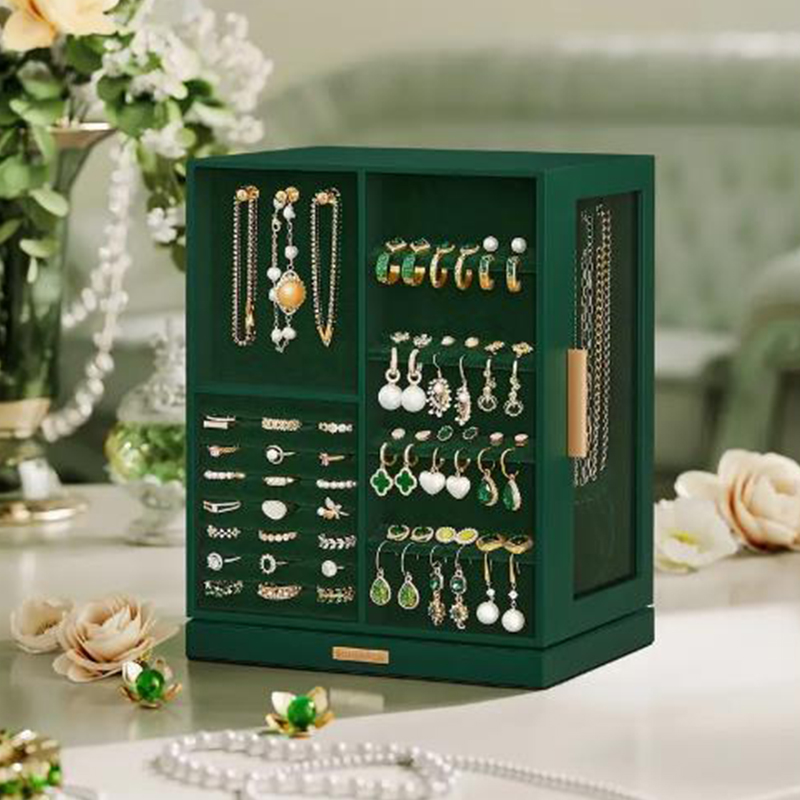
Display Mistakes That Drive Customers Away
Most store owners don't realize they're making these errors until it's too late. Like my cousin who put her diamond necklaces in an old wooden case - you couldn't see the sparkle at all! She switched to a clear acrylic jewelry display case and suddenly people were actually noticing her best pieces.
And don't even get me started on those wobbly necklace display bust models some stores use. I visited a shop last Tuesday where the bust actually tipped over when a customer brushed against it! The owner looked so embarrassed as we scrambled to pick up her $3,000 sapphire necklace off the floor.
Picking Displays That Actually Work
After helping over 50 stores with their displays, here's what I've learned: The best necklace display bust has a wide, heavy base. None of those tiny circular stands that tip if someone sneezes nearby. And the neck should have just the right curve - too straight and necklaces look stiff, too curved and they bunch up weirdly.
For acrylic jewelry display case, thickness matters more than you'd think. The cheap 3mm ones scratch if you look at them wrong. Go for at least 5mm - yeah it costs more, but you won't be replacing it every six months when it gets all cloudy and scuffed up.
Store Layout Tricks That Keep Customers Browsing
Here's a neat trick I picked up from that fancy boutique downtown: Put your main necklace display bust near the entrance but at an angle, so people see it as they walk by. Then place your best acrylic jewelry display case about 10 feet further in. It creates this natural path that guides customers right to your premium items.
Another tip? Vary the heights. Use some tall necklace display bust and some shorter ones. Mix in different sizes of acrylic jewelry display case too. It makes the whole store more interesting to look at. My friend's sales went up 18% just from rearranging her displays this way!
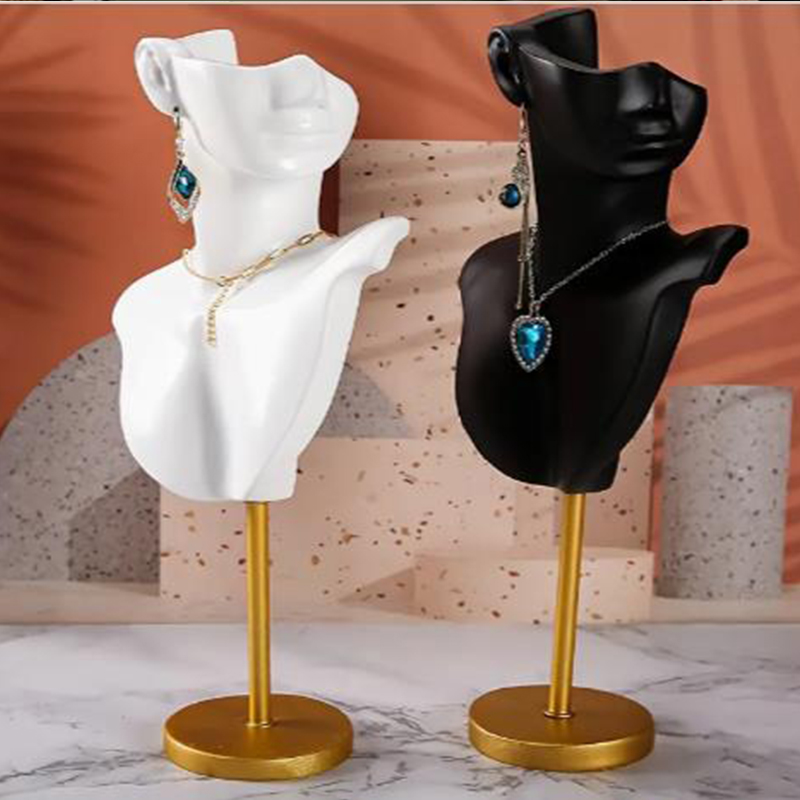
Keeping Your Displays Looking Sharp
You know what drives me crazy? Fingerprints on displays. I train all my staff to wipe down the acrylic jewelry display case with microfiber cloths every two hours. Sounds obsessive, but when sunlight hits those smudges just right? Instant turn-off for customers.
And here's something nobody tells you: Those fancy velvet necklace display bust need special care. The velvet gets matted down after a while. I use a soft brush (the kind for suede shoes) to fluff it up every morning. Makes necklaces sit so much prettier.
Sales Tricks That Really Work
The best sales tactic I ever saw? This clerk would take a necklace from the acrylic jewelry display case and drape it over the necklace display bust while telling its story. "This pearl necklace was hand-strung by..." Suddenly it's not just jewelry - it's an experience. Customers ate it up.
Another winner: Keep a small mirror near your necklace display bust. When customers see how a necklace looks on them (instead of just on the bust), they're way more likely to buy. Simple trick, but it boosted my average sale by $47 last quarter.

Questions I Get All the Time
Q: Should I get white or black necklace display bust?
Honestly? Both. White shows off silver and diamonds better, but black makes gold pop. I keep two of each in my store and switch them seasonally.
Q: How do I stop my acrylic jewelry display case from looking empty?
Space items out, but fill negative space with small decorative elements. I use these cute miniature easels to prop up photos of jewelry being worn. Makes the case feel full without being cluttered.
Q: Why does my necklace display bust make necklaces look shorter?
Probably the neck is too thick. Look for busts with slender necks - they show necklaces at their actual length. I made this mistake with my first order and had to return the whole batch!
Q: Can I put scented items in my acrylic jewelry display case?
Please don't! The scent oils can damage both the case and your jewelry. Learned this the hard way when a vanilla sachet ruined the finish on a $800 case.
Q: How many necklace display bust is too many?
If customers have to turn sideways to walk through your store, you've gone too far. As a rule, no more than one bust per 50 square feet of selling space.
At the end of the day, your necklace display bust and acrylic jewelry display case are like silent salespeople. They work 24/7 to make your jewelry look its best. Get them right, and you'll be amazed at the difference they make. Just ask Sarah - her sales tripled after she upgraded her displays!

Contact information
Website: www.sintopfixtures.com
Wechat/WhatsApp: +86 15980885084
Email: elly@xm-sintop.com
FAQ
1. What are store fixtures?
Store fixtures are essential equipment and furniture used in retail spaces to display, organize, and store merchandise. Examples include shelving units, racks, display cases, counters, and hooks.
2. Why are store fixtures important?
Store fixtures enhance the shopping experience by organizing products, improving accessibility, maximizing space, and creating appealing displays that attract customers and boost sales.
3. What types of store fixtures are commonly used?
Common types of store fixtures include:
Shelving Units(wall shelves, free-standing shelves, adjustable shelving)
Display Cases (glass cases, countertop cases)
Racks (clothing racks, display racks)
Counters (checkout counters, service counters)
Hooks and Pegboards
End Caps
Signage and Graphics
Mannequins
4. How do I choose the right store fixtures for my retail space?
Consider your merchandise type, store layout, and branding needs. Fixtures should be functional, complement your store's design, and fit within your budget. Evaluate your space to determine the best fixture types and configurations for optimal product presentation and customer flow.
5. Can store fixtures be customized?
Yes, many store fixtures can be customized to align with your store's branding and specific needs. Customization options include materials, colors, sizes, and designs. Collaborating with a fixture supplier or designer can help create fixtures that match your store’s style and functional requirements.
6. How can I maximize space with store fixtures?
Utilize fixtures that optimize vertical space, such as wall-mounted shelves and tall display racks. Modular and adjustable fixtures can adapt to changing merchandise or store layouts. Plan your store layout carefully to ensure efficient use of space and smooth customer flow.
7. How do I maintain store fixtures?
Regularly clean and inspect fixtures to ensure they remain in good condition. Check for wear and tear, and repair or replace damaged parts. Follow manufacturer guidelines for maintenance and cleaning to extend the lifespan of your fixtures.
8. Can store fixtures be used for different types of retail stores?
Yes, store fixtures can be adapted for various retail environments, including clothing stores, electronics shops, grocery stores, and more. The choice of fixtures depends on the specific needs and merchandise of the store.
9. How can store fixtures improve the customer experience?
Well-designed fixtures make products easy to find and browse, enhancing the overall shopping experience. Effective use of fixtures creates an organized, aesthetically pleasing environment that encourages customers to spend more time in the store.
10. Where can I purchase store fixtures?
Store fixtures can be purchased from specialized fixture suppliers, retail equipment stores, or custom fixture manufacturers. Online retailers and local suppliers also offer a wide range of options.

